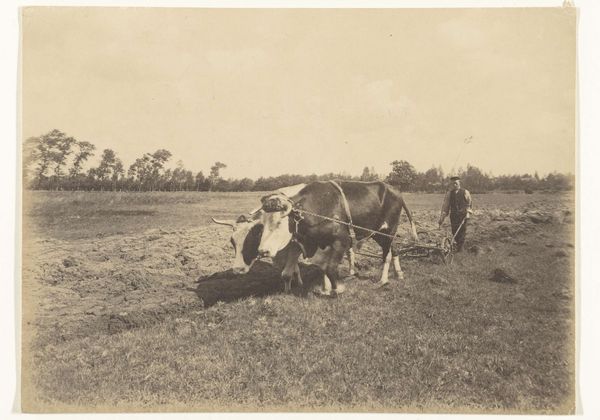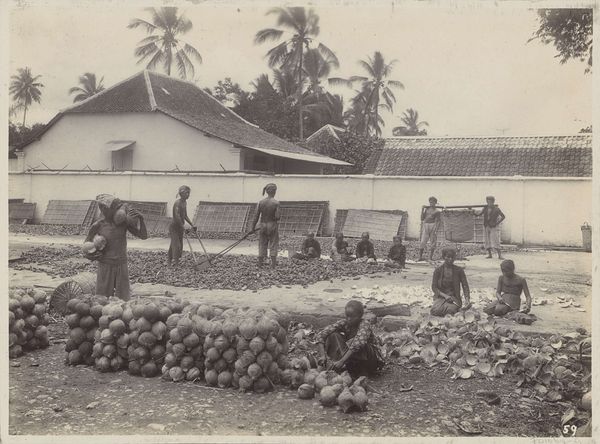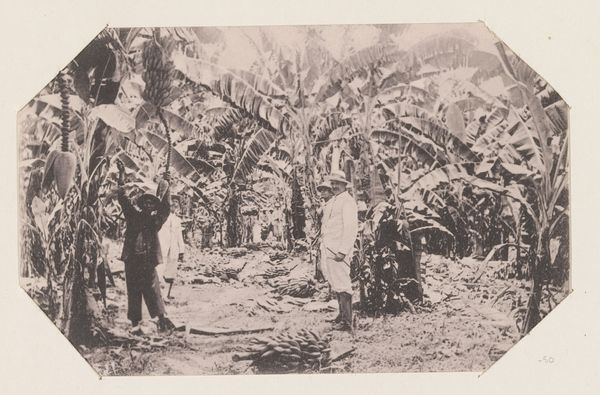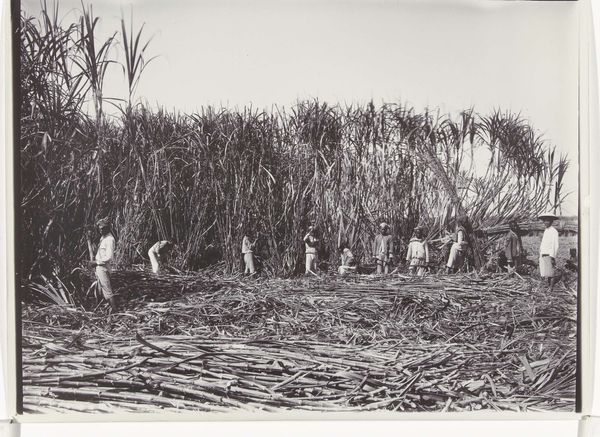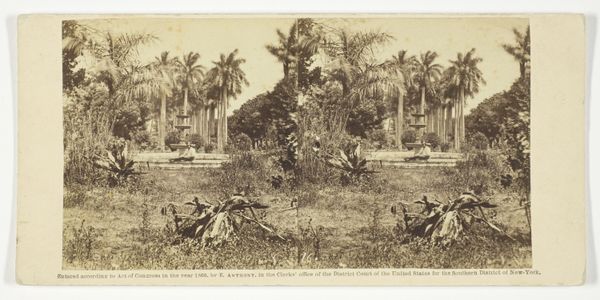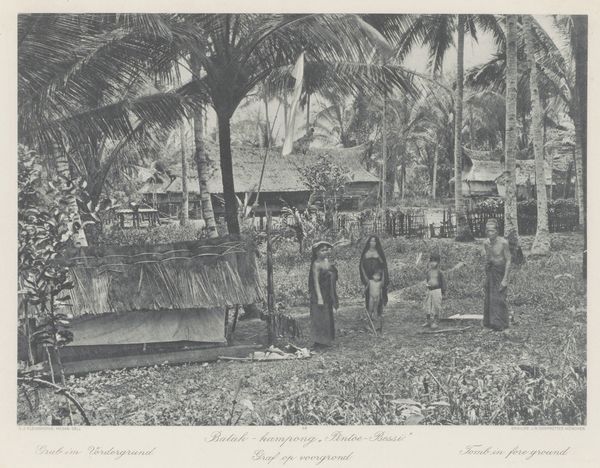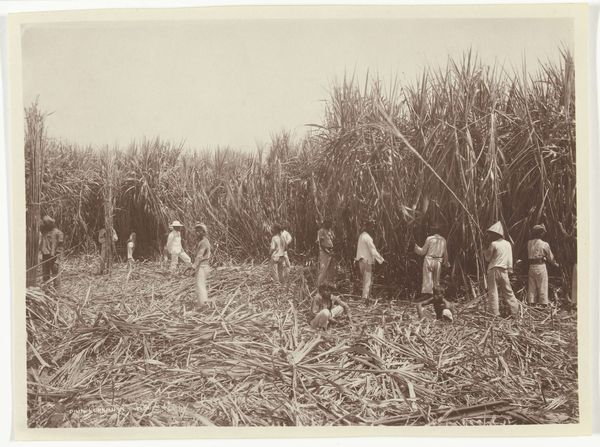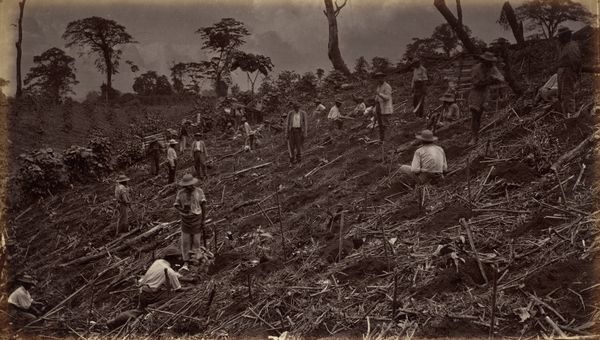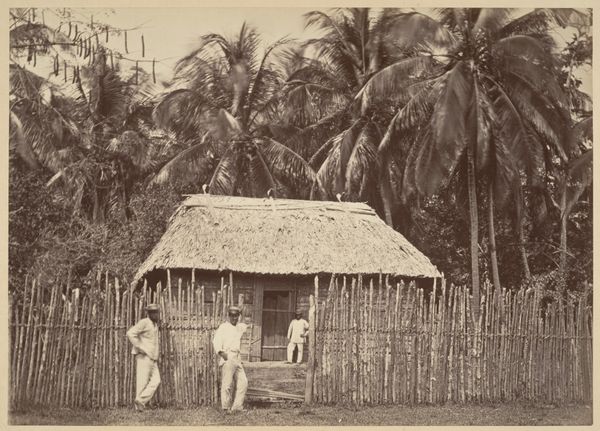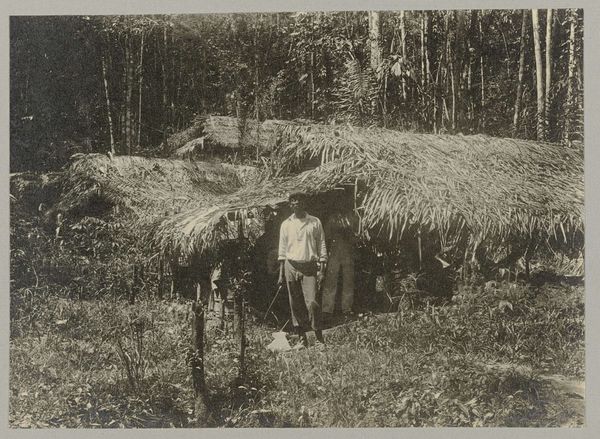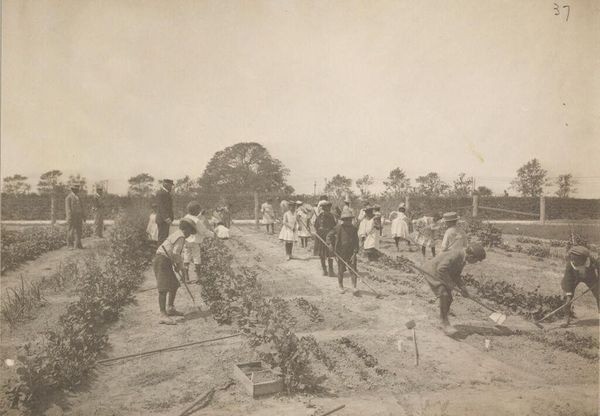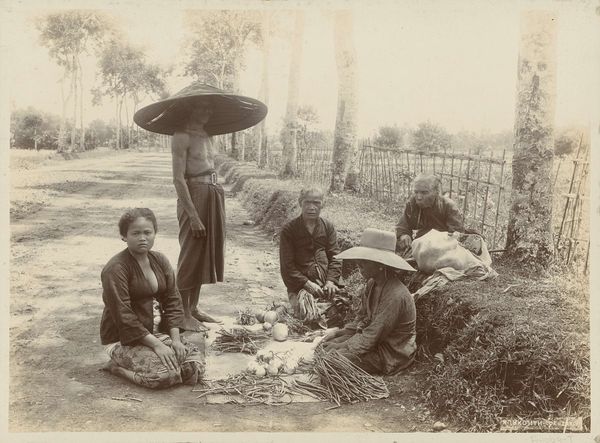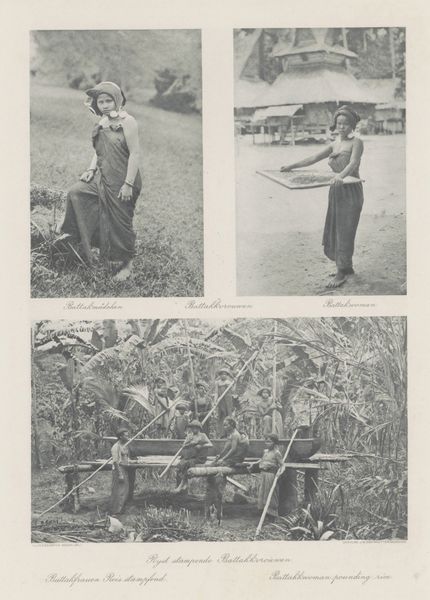
albumen-print, photography, albumen-print
#
albumen-print
#
print photography
#
landscape
#
archive photography
#
photography
#
albumen-print
#
realism
Dimensions: height 167 mm, width 226 mm
Copyright: Rijks Museum: Open Domain
Editor: This is a photograph called “Drogen van rijstplanten, voormalig Nederlands-Indië,” or “Drying Rice Plants, former Dutch Indies,” taken sometime between 1890 and 1911 by Onnes Kurkdjian. The landscape and figures seem frozen in time. How can we unpack the socio-historical context embedded within this seemingly simple genre scene? Curator: This photograph offers a glimpse into the complex power dynamics of colonial Indonesia. While it presents itself as a neutral depiction of everyday life, it's crucial to examine whose perspective it represents and whose it omits. Notice the "picturesque" composition – the neatly arranged rice plants, the figures posed "naturally" within the landscape. What socio-political narrative do you think such romanticized framing of labor is designed to support? Editor: I see what you mean. It feels like it's aestheticizing what must have been incredibly hard work. And the composition, while visually appealing, seems to gloss over the potential exploitation inherent in a colonial system. Curator: Exactly. And consider the albumen print itself, a popular medium for colonial-era photography. These images were often circulated back in Europe to reinforce ideas of exoticism and imperial control. Think about how this photograph might have shaped perceptions of Indonesia and its people among a European audience. How do you think images like this shaped, and were shaped by, institutional power structures? Editor: It created a sense of distance, a power dynamic where the colonizer is the observer and the colonized are the observed… a visual manifestation of unequal power. It’s less an objective snapshot and more a curated performance for a Western audience. Curator: Precisely. Examining photographs like these helps us understand the complex role art played in constructing and perpetuating colonial ideologies. Editor: That's made me see this photograph in a completely new light. It’s not just a historical document, but evidence of how images can participate in systems of power.
Comments
No comments
Be the first to comment and join the conversation on the ultimate creative platform.
